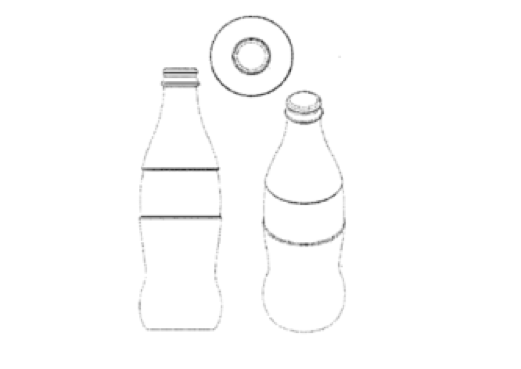
by Kathleen Lynch | May 27, 2016 | Innovation, IP Management, Start Up Considerations
Earlier this year, I wrote about the federal Defense of Trade Secrets Act passed by the senate. This month, President Obama signed the act into law. The law (“DTSA”) creates a federal cause of action for theft of trade secrets. This means that the owner of a trade secret that has been stolen or disclosed can sue in federal court.
There is a whistleblower provision that grants immunity from a theft of trade secret claim to anyone who makes a disclosure in confidence to either (1) a federal, state, or local government official, or (2) an attorney, as long as the reason for disclosure is for the sole purpose of reporting or investigating a violation of the law.
The whistleblower provision requires employers to provide notice to all employees. Failure to do so will void an employer’s ability to take advantage of the DTSA’s provisions regarding exemplary damage awards (up to twice the damage award) and attorneys’ fees in cases of willful violations.
What’s the take away here? It is in every employer’s best interest to include the new notification in any employee agreement relating to trade secrets, confidentiality and/or nondisclosure obligations. This would include
- Non-compete agreements
- Consulting agreements
- Employment agreements
- Separation agreements
- Retention agreements, and
- Independent contractor agreements.
It would be wise to also include a notice in any employee handbook or new employee orientation materials.
Protecting your innovative developments is critical to any organization. Having the right person to help you make those decisions is important. The Law Office of Kathleen Lynch PLLC is designed to help businesses such as yours keep ahead of the game. The first telephone consultation is free. Email us at [email protected].

by Kathleen Lynch | Apr 19, 2016 | IP Management, Start Up Considerations
I wrote earlier this year in my blog about a pending trade secret bill approved by the judiciary committee in the senate. Recently the senate passed the Defend Trade Secrets Act. The act essentially provides for a federal cause of action for trade secret cases. The bill is now in the house and is expected to pass. President Obama has shown his support for the bill.
While the federal law is pending, state trade secret laws are the only remedy currently available. Recently Epic Systems brought a trade secret case against Tate Group, an Indian company, for theft of trade secrets, computer fraud, breach of contract and unfair competition in the western district of Wisconsin (case 14-cv-748-wmc). The jury awarded Epic $240 million in compensatory damages and $700 million in punitive damages. The jury found Tata guilty of downloading documents from hospital software and providing those documents to one of its subsidiaries, Med Mantra. If Epic ends up collecting the award, it will be more than double Epic’s expected annual profits this year.
What’s the take away here? If you are the owner of trade secrets-protect them. Ensure that you have implemented systems and educated your people on best practices to keep your trade secrets confidential. If someone takes your trade secrets without authorization, go after them. Hopefully you will be able to do that in federal court in the near future. If you are working with companies that have trade secrets, make sure you abide by the terms of the confidentiality agreement and treat the trade secret information in the same manner as you would treat your own proprietary information.
Protecting your innovative developments is critical to any organization. Having the right person to help you make that decision is important. The Law Office of Kathleen Lynch PLLC is designed to help businesses such as yours keep ahead of the game. The first telephone consultation is free. Email us at [email protected].

by Kathleen Lynch | Mar 22, 2016 | Entrepreneurship, Start Up Considerations
Paul McCartney is using a US Copyright provision to right a wrong he feels occurred many years ago. As you may recall, the bulk of the Beatles tunes were attributed to the duo of John Lennon and Paul McCartney. However, in the 1960’s, Paul McCartney and the other Beatles lost their publishing rights to many of their songs when ATV, a publishing company created by the Beatles, their manager and some of their investors, was sold without the knowledge of the band members.
At one time Yoko Ono, John Lennon’s widow and McCartney tried to purchase ATV for 20 million dollars. The deal fell through and Michael Jackson purchased ATV for 47.5 million in 1985. McCartney may now be able to reclaim those rights 56 years later.
Rather than let it be, McCartney filed a “notice of termination” with the US Copyright Office. This enables a songwriter to reclaim ownership in publishing rights for a song anywhere between 2 to 10 years before the 56 year lapse of time after the publication rights were originally sold. Some of the songs won’t be eligible for release until the singer is 83.
What’s the take away here. Any artist, author or creator of a work protected under copyright law should understand those rights . In addition, anyone who may have an interest subject to copyright law should think carefully about corporate structure and where the ownership of the intellectual property should be held when forming a new business. This often takes the form of an IP holding company. Situations may vary, but who will own the rights in the copyright and how the business will be structured should be well thought out when setting up any business.
Protecting your innovative developments is critical to any organization. Having the right person to help you make that decision is important. The Law Office of Kathleen Lynch PLLC is designed to help businesses such as yours keep ahead of the game. The first telephone consultation is free. Email us at [email protected].

by Kathleen Lynch | Mar 2, 2016 | Entrepreneurship, Innovation, Start Up Considerations, Trademark Service Mark
A European General Court recently denied the Coca-Cola Company European Community trademark protection for the shape of its new bottle design. European Community trademark protection provides trademark rights to the owner throughout all European Union member states.
The bottle design was determined by the court to lack distinction. In fairness, protection of a shape in the EU is difficult to prove. The shape must be shown to be recognizable by consumers by shape alone. Coke failed to meet its burden of proof in this situation.
Here, Coke revamped its bottle design and made it less distinctive than previous designs, which were protected by EU Community trademark registration. In an effort to modernize their product packaging, Coke may have drifted away from its recognizable bottle shape.
What’s the take away here? For any company, protecting the shape of a product through trademark registration is a challenge. The shape must be sufficiently distinctive to enable consumers to recognize the product over the competition. If your organization is going to go down that route, be sure to create a sufficiently distinctive product that is recognizable by your customers over the competition.
Protecting your innovative developments is critical to any organization. Having the right person to help you make that decision is important. The Law Office of Kathleen Lynch PLLC is designed to help businesses such as yours keep ahead of the game. The first telephone consultation is free. Email us at [email protected].

by Kathleen Lynch | Aug 11, 2015 | Entrepreneurship, Innovation, Start Up Considerations
Joseph Tierney, is a well known street artist known as “Rime”. He sued fashion designer, Jeremy Scott and high-end Italian apparel brand, Moschino over the dress Katy Perry wore to the Metropolitan Museum of Art’s Met Gala in May.
Rime accused Moschino and Scott of copying one his giant murals entitled “Vandal Eyes,” which is now located on the side of a Detroit building, and displaying the mural on Perry’s dress. The name and signature of Rime were also on the dress. The dress and mural can be seen here.
Rime is bringing copyright, unfair competition and publicity rights claims against Moschino and Scott.
Rime states that the dress, which violated his rights, was also worn by supermodel Gigi Hadid at a the February 2015 Moschino runway show in Milan. In addition, photos of the dress are on the company’s websites as well as social media. Court documents reference The Wall Street Journal as reporting Moschino experienced a 16 percent increase in revenue for the first quarter of 2015.
Rime is asking the court to stop any further marketing or sale of the dresses as well as all profits made from the sale or any dresses, and other monetary damages.
What’s the take away here? Don’t copy someone else’s material. If you find something you like, ask if you can use it. If you cannot, create something yourself or go elsewhere.
Protecting your innovative developments is critical to any organization. Having the right person to help you make that decision is important. The Law Office of Kathleen Lynch PLLC is designed to help businesses such as yours keep ahead of the game. The first telephone consultation is free. Email us at [email protected].

by Kathleen Lynch | Jan 29, 2015 | Entrepreneurship, Patent Prosecution, Start Up Considerations, Trademark Service Mark
Intellectual property is the life blood of many small businesses and entrepreneurial enterprises. Knowing how and what may need protection could mean the difference between success and failure. I set forth below three basic things every entrepreneur and business person should do to protect the intellectual property inherent in any organization.
- Identify your intellectual property
- Before you can protect your intellectual property assets, you need to understand what they are. Intellectual property is a bundle of legal rights. These consist essentially of patents, trademarks, copyrights and trade secrets. Patents are directed primarily to objects of manufacture (things), methods of making or doing something, designs (ornamental aspects of a thing), compositions of matter and plants. If you make devices or compositions of matter, you will likely want to determine whether your device, composition, or methodologies associated with your business may be subject to patent protection. If you make an object, you may also want to consider whether there are any ornamental aspects of your object that may be new and subject to design patent protection.
- If you use trademarks, service marks or logos in connection with the sale of your goods or services, you may want to register those marks or logos nationally or internationally. If your business involves training or educational services, any materials used may be subject to copyright protection. If your business has been successful by using particular strategies or processes that have given it a competitive edge over your competition, you may want to properly identify those strategies as trade secrets. Some methodologies used in manufacturing may be better suited to trade secret protection rather than patent protection.
- Determine whether your intellectual property can be protected
- Once you have identified what you believe to be your intellectual property, you need to determine whether it is protectable under current laws. If you believe your new widget is patentable, a patentability search and assessment is a logical next step. A patentability search and assessment will provide you with the information you need to determine whether there is any meaningful patent protection available to you. This applies to objects, as well as methods, compositions of matter, and designs. A proper patentability search will search all relevant patent records and provide you with the most pertinent documentation of the state of the relevant art. A patent professional can assist with interpreting the search results to determine the scope of patent protection likely available to your invention.
- Similarly, with a trademark or logo, an availability search and assessment is a prudent next step. This involves searching relevant records to provide you with current uses of the same or similar marks or logos. From this information, you can determine whether to proceed with a trademark or service mark registration. A trademark professional can help you make that determination.
- Protect What Intellectual Property You Can
- Once you have identified and determined what rights are available to you, you can proceed with protecting your intellectual property to maximize your competitive advantage. Patentable aspects of any objects, methods, compositions or designs should be protected. Marks or logos available for use and registration should be the subject of US or international trademark or service mark applications.
- Copyrighted materials should be marked with the “©” or “Copyright” followed by the year(s) in which the material was created and name of the owner. Trade secrets, properly identified, should be protected through a series of procedures identified by your organization to ensure confidentiality. This may include, by example, limiting access to certain information, marking documents as “confidential”, ensuring all employees understand their obligations to maintain secrecy of proprietary information, executing confidentiality agreements with third parties where proprietary information may be exchanged.
Protecting your innovative developments is critical to any organization. Having the right person to help you make that decision is important. The Law Office of Kathleen Lynch PLLC is designed to help businesses such as yours keep ahead of the game. The first telephone consultation is free. Email us at [email protected].









